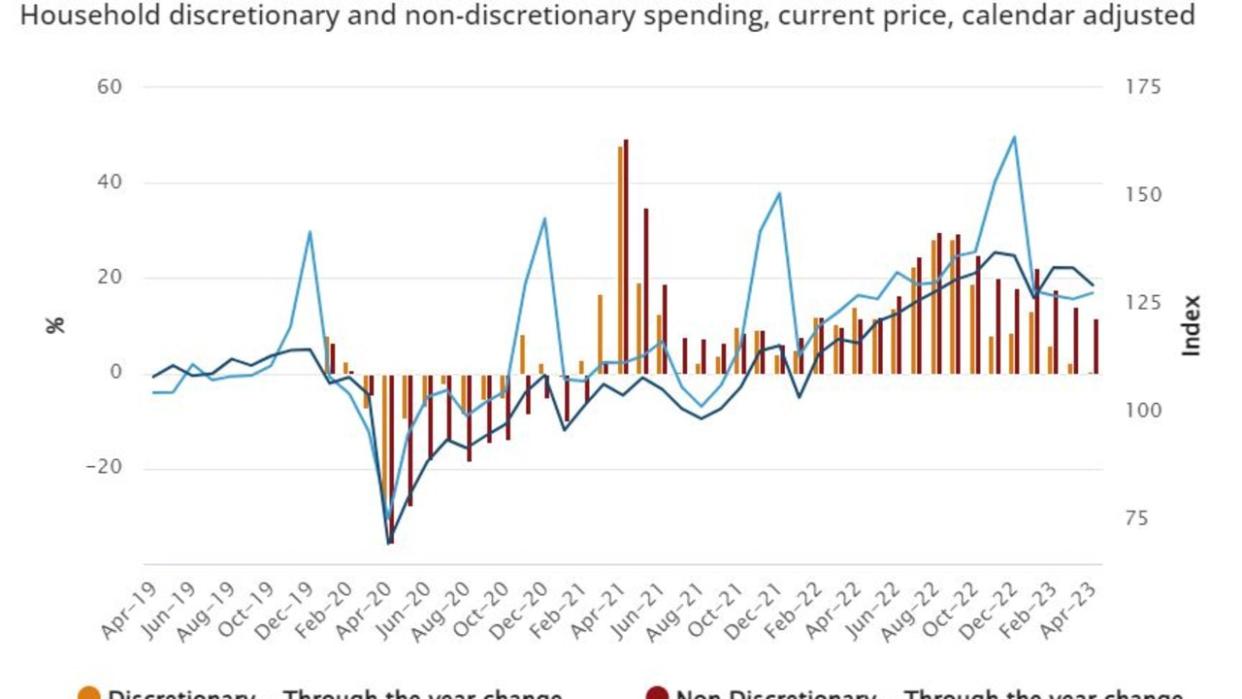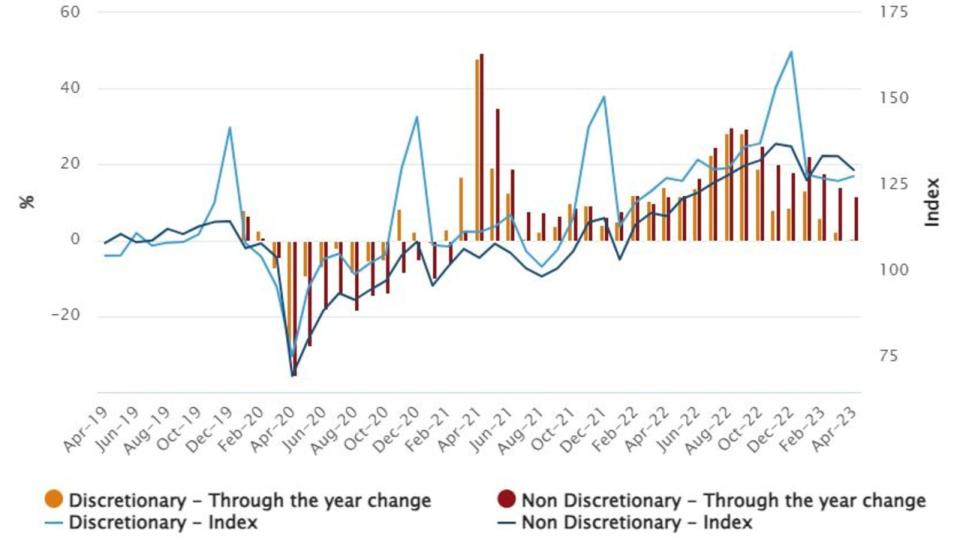Sign cost of living crisis hitting Aussies hard

Household spending is up compared to the same time last year, but growth has slowed considerably since the end of 2022.
New ABS figures out on Tuesday show that a growth rate of six per cent in April continues the trend down from a 29.1 per cent peak in August.
Kate Lamb, head of business indicators at ABS said the downward trajectory was caused by a lower growth in spending on consumer services “like holiday travel or eating out, which continues to normalise following the Covid-19 pandemic”.
The figures show the highest spending growth for the month was transport, which was up 15.5 per cent, but which is still substantially lower compared to their August peak of 63.5 per cent.

“Spending growth for goods has also slowed but to a lesser extent, as inflation continues to increase spending on food,” Ms Lamb said.
The figures were released just hours before the Reserve Bank makes its decision on whether to raise interest rates or leave them on pause.
Meanwhile, the ABS has revealed the number of approved total dwellings fell 8.1 per cent in April.
Private sector houses fell 3.8 per cent, while all other private sector dwellings fell 16.5 per cent.
The figures reveal the value of new residential building fell 2.7 per cent, while the value of non-residential buildings rose 13.5 per cent, with the total value of building rising 4.7 per cent.


